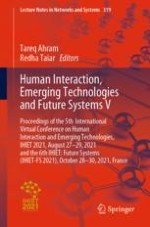2022 | OriginalPaper | Chapter
Examination of Balance Adjustment Method Between Voice and BGM in TV Viewing
Authors : Takanori Kono, Rin Hirakawa, Hideki Kawano, Yoshihisa Nakatoh
Published in: Human Interaction, Emerging Technologies and Future Systems V
Publisher: Springer International Publishing
Activate our intelligent search to find suitable subject content or patents.
Select sections of text to find matching patents with Artificial Intelligence. powered by
Select sections of text to find additional relevant content using AI-assisted search. powered by
